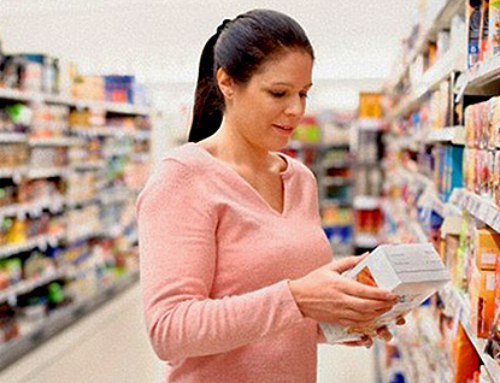Color can have profound effects on consumers, making it an important element in food and beverage packaging design. Research into the effects of color have revealed that consumers subconsciously respond to color with very specific social and cultural messages. Understanding the responses evoked by color can provide insight into which colors may be most appropriate for specific food product packaging.
In effectively using color on food product packaging design, the task is to match the brand message, product positioning, and product category with colors that will reinforce product marketing efforts and drive consumer purchase decisions. The flip side is to make certain that consumers are not given miscues through the use of color on food packaging.
Here are some cues on color:
1. Blue: Blue is a universally appealing color that studies indicate most people like. It connotes a sense of trustworthiness and dependability. According to a recent Journal of Business study, consumers are 15% more likely to return to stores with a predominately blue color scheme. For example, a blue color scheme for food packaging would be a good choice for products with a positioning statement focused on dependable product performance.
2. Green: The color green has become the poster child for environmentally friendly, natural, organic, and fresh. While it is pervasively used in food product packaging, the color green remains a good choice for products in these categories based on the ingrained connection consumers have with this color.
3. Red: Red is considered the strongest emotive color and marketing experts caution that red acts as an alarm to consumers. On food packaging, red is best used sparingly, primarily to call out specific information in the context of another, less alarming, more soothing color scheme.
4. Yellow: Yellow is a color that evokes high energy. Marketing studies have also found that yellow stimulates appetite, which explains its prevalent use in QSR and fast casual foodservice operations. The use of yellow on food packaging, for example, may be a good choice for snack foods or self-indulgent products such as candy, which are often purchased on impulse.
5. Orange: Research has shown that orange is associated with affordability and fairness in the responses of consumers. Retailers such as Home Depot, whose message is one of value, use orange in their brand identity and throughout their retail environments. Contrast this with Lowes, a Home Depot competitor, whose color scheme is primarily blue and whose positioning is primarily one of trust and dependability. The color orange would be a good choice for food products whose primary message is value and affordability.
6. Purple: Throughout history, purple has been associated with royalty. It evokes in consumers the notion of luxurious and expensive, but probably worth the cost. Purple is widely used for cosmetic and fragrance packaging, at both ends of the price point scale. In food packaging, purple can be seen on chocolate candy and individually wrapped frozen treats packaging, particularly for those brands whose message point is focused on a little self-indulgence.
7. Black: Black is the calling card color for sophistication and luxury. It is commonly seen on high-end cosmetic packaging and is also used by more affordable brands to upscale their position. Black is a strong statement for food packaging and works best for products that are positioned as upscale rather than products positioned for their value proposition.
8. White: Marketing experts affirm that consumers associate the color white with purity and simplicity, as well as honesty and modernity. In food packaging, Pillsbury Simply…Cookies line of refrigerated, ready-to-bake cookies is an example of using primarily white packaging to reinforce the positioning of this product as having a minimal number of ingredients and being quick, easy to bake off.
These color cues should not limit creativity in packaging design, but they do serve to remind us of the power of color. The most important take away for food packaging design is that color should be chosen carefully so as not to miscue consumers about the positioning of a product.





